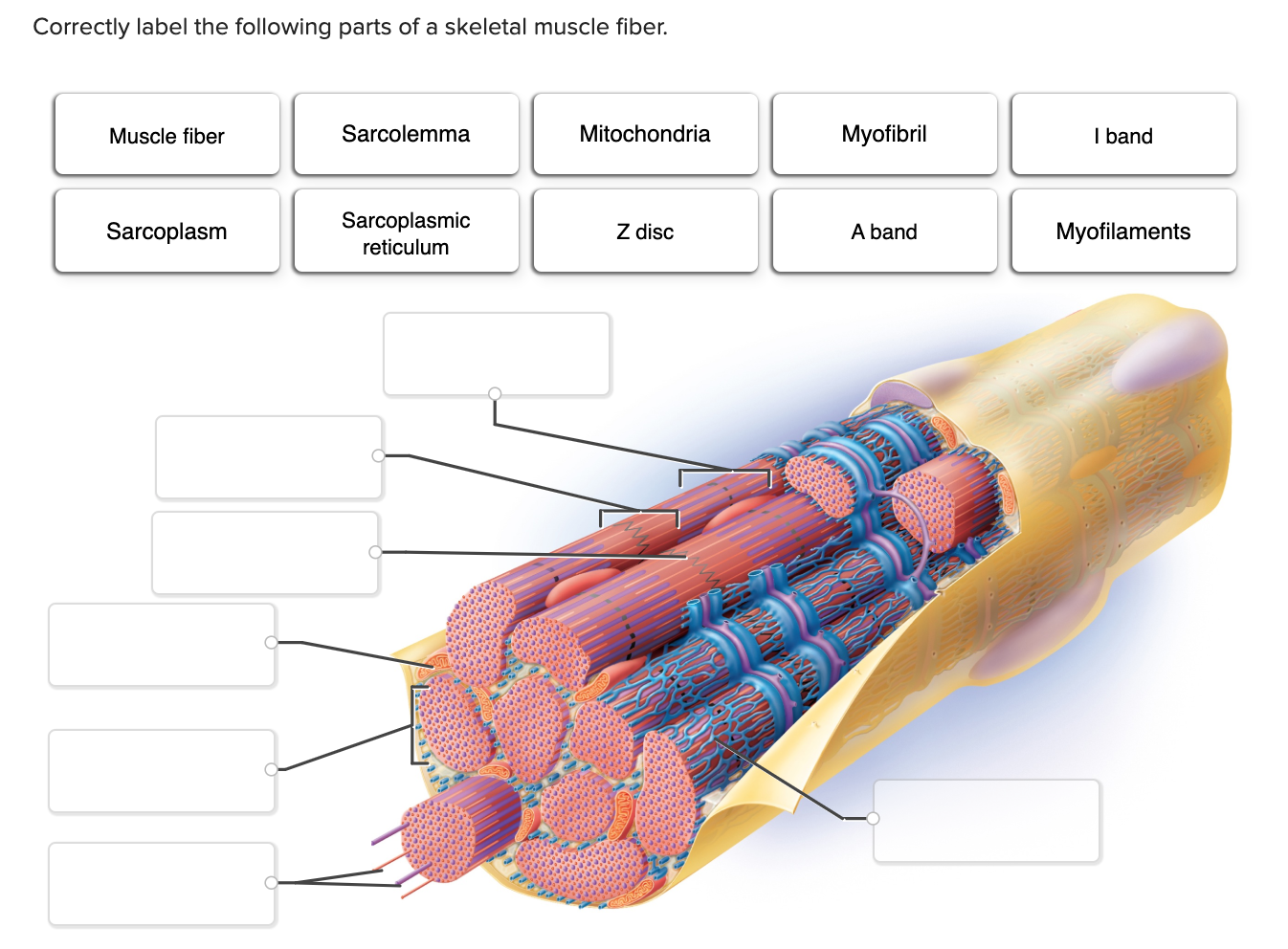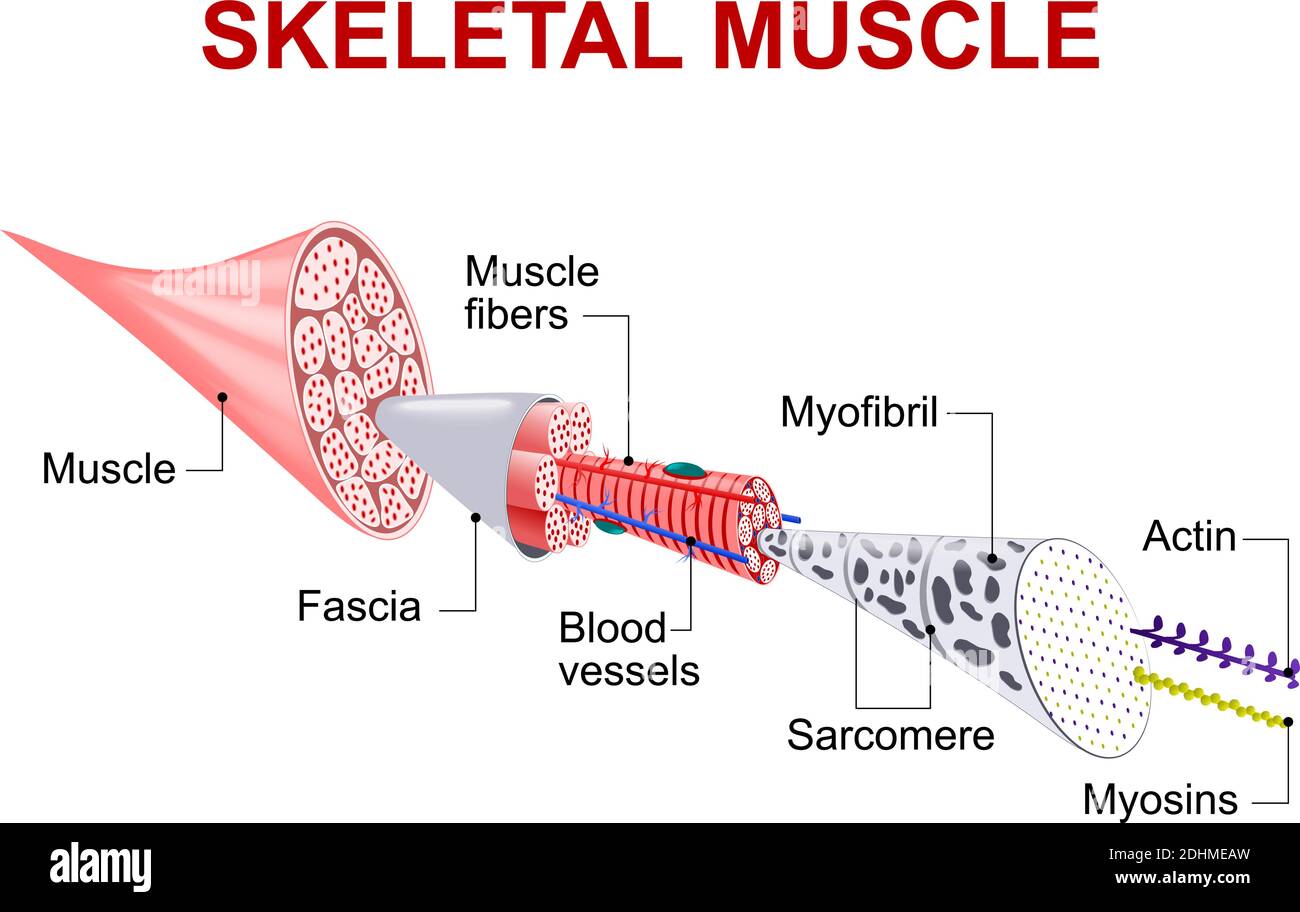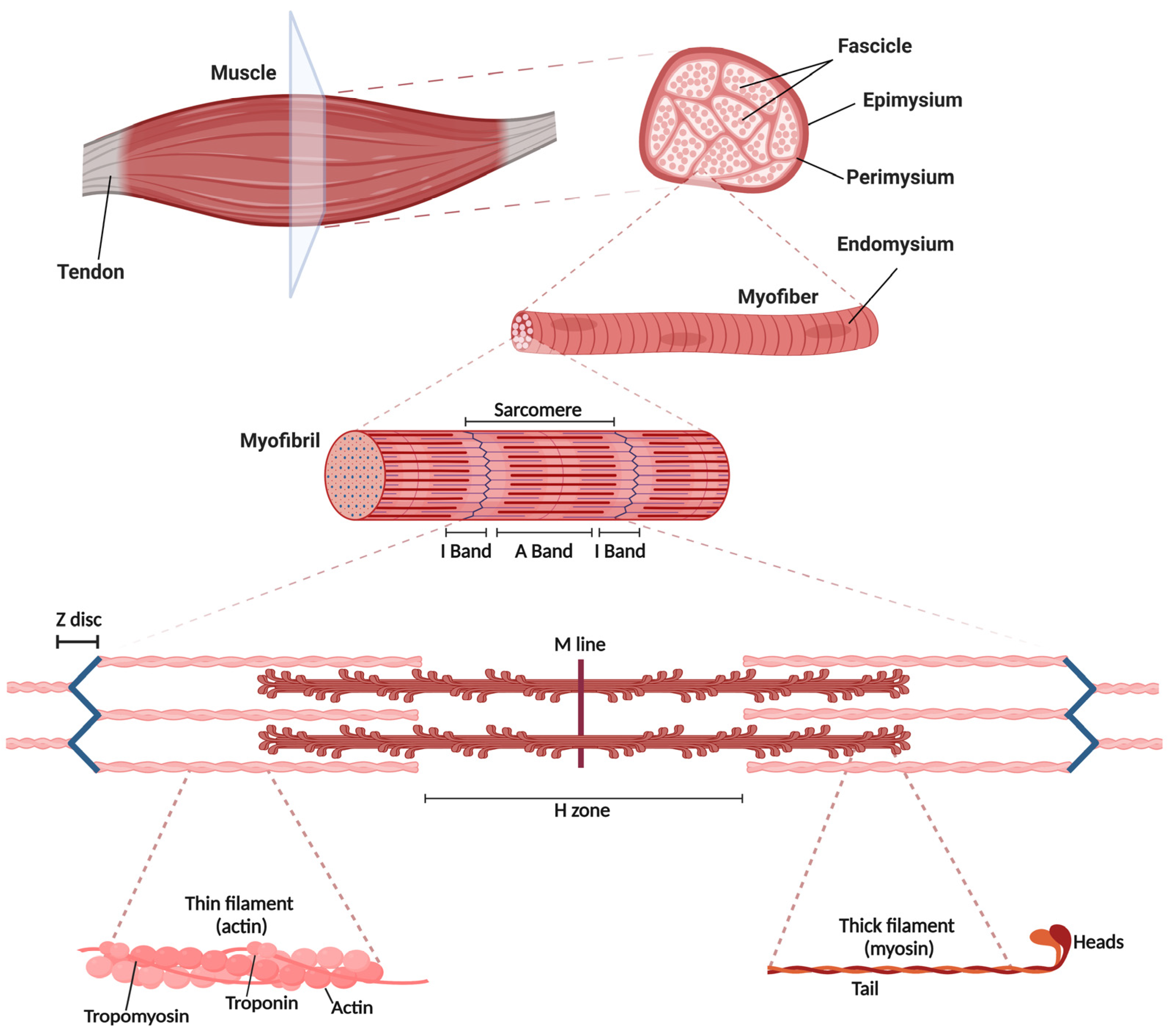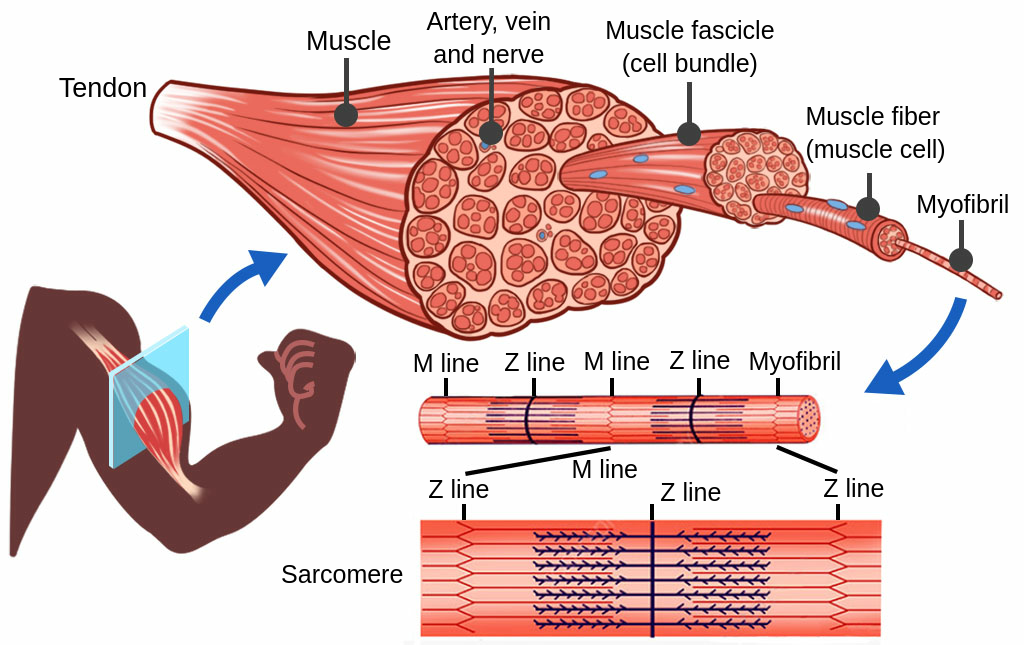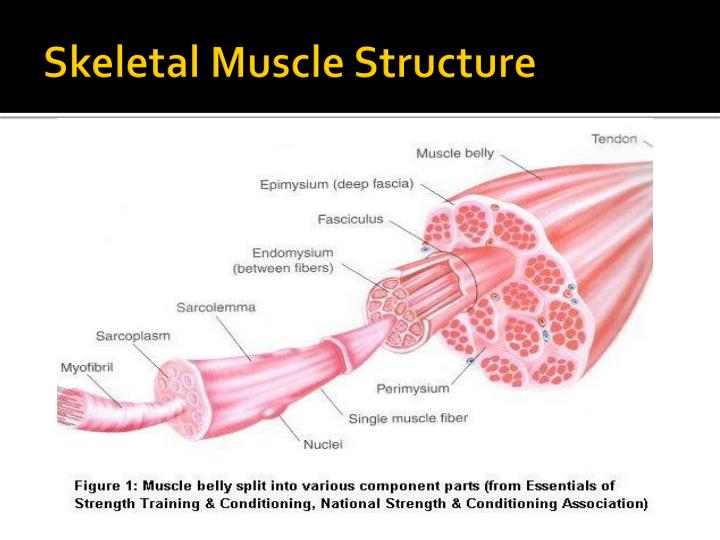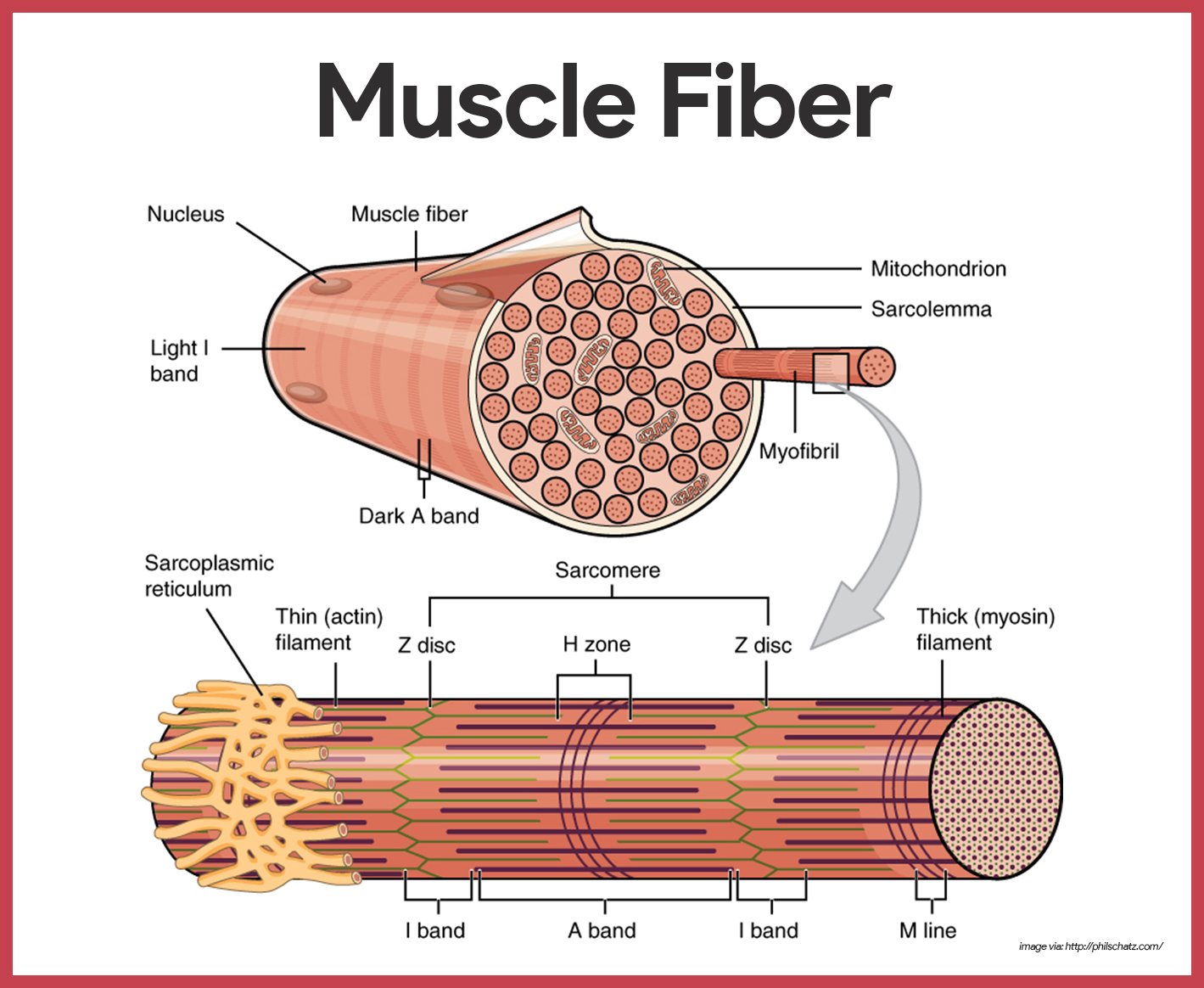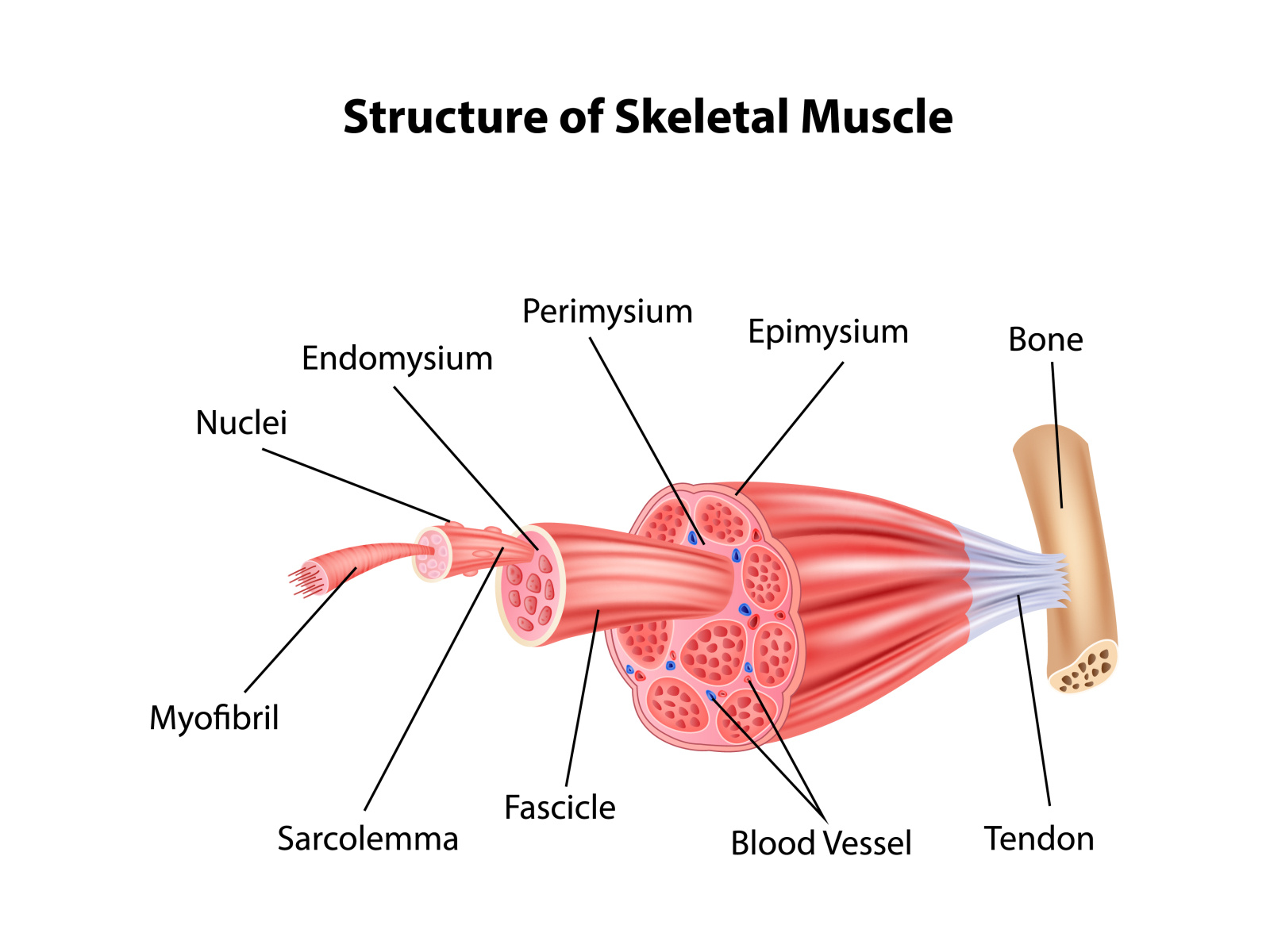Which Of The Following Does Not Apply To Skeletal Muscle

Imagine a marathon runner, legs pumping like pistons, each stride a testament to human endurance. Consider a weightlifter, muscles bulging as they hoist an impossible weight overhead. These feats of strength and stamina are all thanks to skeletal muscle, a remarkable tissue that powers our every move. But what isn't skeletal muscle capable of? What characteristics don't define this essential part of our anatomy?
This article delves into the fascinating world of skeletal muscle, exploring its key properties and, crucially, identifying what doesn't apply. We'll unravel its structure, function, and unique characteristics, providing a comprehensive understanding of this vital tissue and addressing the question: Which of the following does not apply to skeletal muscle?
To truly appreciate skeletal muscle, we need to understand its fundamental building blocks. Skeletal muscle, unlike smooth or cardiac muscle, is characterized by its striated appearance under a microscope.
These striations are due to the highly organized arrangement of contractile proteins, primarily actin and myosin, within muscle fibers. This organization allows for powerful and coordinated contractions.
Skeletal muscle is also under voluntary control, meaning we consciously decide when and how to contract these muscles. Think about waving your hand or taking a step – these are deliberate actions initiated by our nervous system.
Each skeletal muscle fiber is a long, cylindrical cell containing multiple nuclei. This multinucleated structure arises from the fusion of many precursor cells during development.
Another defining characteristic is its ability to hypertrophy, meaning the muscle fibers can increase in size in response to exercise. This is what allows bodybuilders to develop impressive muscle mass.
Now, let's consider what doesn't fit the description of skeletal muscle. One critical distinction lies in its regenerative capacity.
While skeletal muscle can repair itself to some extent after injury, it has limited regenerative abilities compared to some other tissues, like skin or liver.
Damaged muscle fibers can be replaced by scar tissue, which doesn't have the same contractile properties as healthy muscle. This can lead to reduced strength and function.
Distinguishing Skeletal Muscle from Other Muscle Types
To further clarify what doesn't apply to skeletal muscle, let's compare it to the other two types of muscle tissue: smooth muscle and cardiac muscle.
Smooth Muscle
Smooth muscle, found in the walls of internal organs like the stomach, intestines, and blood vessels, is responsible for involuntary movements like digestion and blood pressure regulation. Unlike skeletal muscle, smooth muscle is not striated and is controlled by the autonomic nervous system, meaning we don't consciously control its contractions.
Smooth muscle cells are typically smaller and spindle-shaped, with a single nucleus. They have a greater capacity for regeneration compared to skeletal muscle.
Therefore, the characteristics of smooth muscle, such as involuntary control and lack of striations, do not apply to skeletal muscle.
Cardiac Muscle
Cardiac muscle is found only in the heart and is responsible for pumping blood throughout the body. Like skeletal muscle, cardiac muscle is striated. However, unlike skeletal muscle, it's under involuntary control by the autonomic nervous system.
Cardiac muscle cells are branched and interconnected by specialized junctions called intercalated discs, which allow for rapid and coordinated electrical signaling.
While cardiac muscle has some regenerative capacity, it's very limited, particularly after a heart attack. So, the involuntary control and unique cellular structure of cardiac muscle do not apply to skeletal muscle.
Key Differences Summarized
In summary, skeletal muscle is characterized by:
- Striated appearance
- Voluntary control
- Multinucleated fibers
- Capacity for hypertrophy
Therefore, the following do not apply to skeletal muscle:
- Involuntary control
- Lack of striations
- Uninucleated cells
- Significant regenerative capacity (comparable to skin or liver)
Understanding these distinctions is crucial for comprehending how our bodies function and for diagnosing and treating muscle-related conditions.
Clinical Significance
Knowledge of skeletal muscle characteristics is essential in various clinical settings. For example, muscle biopsies are often performed to diagnose neuromuscular disorders, such as muscular dystrophy or myositis.
These biopsies allow pathologists to examine the structure and composition of muscle fibers, identifying abnormalities that can help pinpoint the underlying cause of the disease.
Understanding the limited regenerative capacity of skeletal muscle is also important in managing injuries. Rehabilitation programs often focus on strengthening existing muscle fibers to compensate for damaged tissue.
"The study of skeletal muscle is fundamental to understanding human movement and health," says Dr. Emily Carter, a leading researcher in muscle physiology at the National Institutes of Health. "Knowing what defines skeletal muscle and what sets it apart from other tissues is crucial for developing effective treatments for muscle-related diseases."
The Future of Muscle Research
Research into skeletal muscle is ongoing, with scientists exploring new ways to enhance muscle regeneration and treat muscle disorders. Gene therapy and stem cell therapy hold promise for restoring muscle function in individuals with conditions like muscular dystrophy.
Scientists are also investigating the role of various signaling pathways in regulating muscle growth and metabolism. This research could lead to the development of new drugs and therapies for improving athletic performance and preventing age-related muscle loss (sarcopenia).
As we continue to unravel the complexities of skeletal muscle, we can expect to see further advances in our understanding of human movement, health, and disease.
From the subtle twitch of an eyelid to the powerful thrust of a sprinter, skeletal muscle is the engine that drives our physical existence. By understanding its unique characteristics and limitations, we gain a deeper appreciation for this remarkable tissue and its vital role in our lives.
So, the next time you marvel at an athlete's prowess or simply take a walk in the park, remember the intricate workings of skeletal muscle, the tissue that allows us to move, explore, and experience the world around us. Appreciate its strength, acknowledge its limitations, and recognize its vital contribution to our overall well-being.
